#svanhildr
Text

more svanhildr - trying new things, like a brave boy
#my art#anthro#furry#illustration#oc#svanhildr#dysterel#i have so many great brushes i never use for no reason so i'm expanding my horizons and using like 10 brushes instead of 3#and i used the pencil tool for the first time so i could make a sprite of svanhildr#btw don't do pixel art without looking at multiple tutorials first. worst mistake of my life#i think my blobby indeterminate sprite daughter looks great though#also has anyone seen brass eye and if so have you seen when the posh reporter lady is walking to the prison#and she turns to the camera and says something like “i'm going going inside now. like a BAD boy”#anyway it gets me every time and writing brave boy made me remember it
2K notes
·
View notes
Text
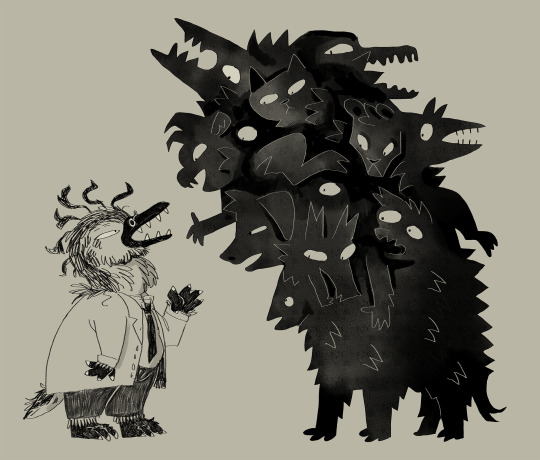
gonna dip in and out of oc-tober - i'm already late, so here's a quick doodle of day 1) fav oc and day 2) new oc. mockley's the current apple of my eye and ethos is one of my newest fellas :^)
#my art#oc tober#oc#mockley#ethos#restraining myself from saying i loooove u mockley over and over again. it just feels GOOD to finally get her design right#was gonna colour ethos with the usual scribble method before i realised that would take 10000 years and also destroy my hand#day 3 is gonna be svanhildr and i'm giving her a proper illustration since she hasn't had one for a while and these two have#i never do these sort of challenges cause it just feels like stress for nothing but i love my ocs so ofc i'll do a bit of oc-tober
38 notes
·
View notes
Photo


Some lil things of @chalkrub‘s Svanhildr! I Love her and wish to protect her 😭
#artfight#furry#my art#had to limit myself to Just Two of her#the thing about drawing a scene is you have to Draw It#messed up....#but worth it
60 notes
·
View notes
Text

svanhildr vesta, 37, wizard of many talents (master of none)
19 notes
·
View notes
Photo
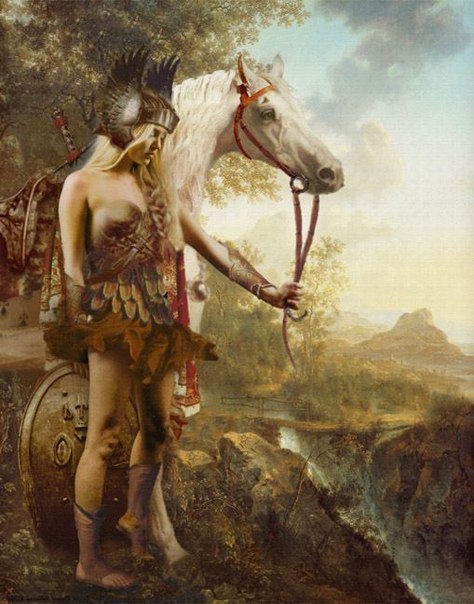
Heill dagr, heilir dags synir,
heil nótt oc nipt! …
Lengi ec svaf, lengi ec sofnuð var, …
hverr feldi af mér fölvar nauðir?
- Sigrdrífumál (The Lay of Sigrdrifa)
Hail to the day! Hail to the sons of day!
hail to night and her kin! …
Long I slept, long was I sleeping …
Who has lifted from me my pallid coercion?
At the climax of Siegfried, an astonishing emotional and dramatic climax within Richard Wagner’s Ring, Brünnhilde at last awakens from her enchanted sleep. Her ecstatic song quotes directly from the Poetic Edda, combining lines from the first three stanzas of the Old Norse poem Sigrdrífumál (The Lay of Sigrdrifa).
Here’s how Wagner renders it:
Heil dir, Sonne Hail, sun!
Heil dir, Licht! hail, light!
Heil dir, leuchtender Tag! hail, radiant day!
Lang war mein Schlaf; Long was my sleep;
ich bin erwacht. I am awakened.
Wer ist der Held, Who is the hero
der mich erweckt? who awakened me?
Siegfried, Act III, sc. 3.
Richard Wagner saw that the simplicity and intensity of the poem’s language at this transcendent moment could not be improved upon. Brünnhilde awakes to her hero, the man who knows no fear, to a new world in which — deprived of her divinity — a new human existence of love and glory seems possible for her and for Siegfried.
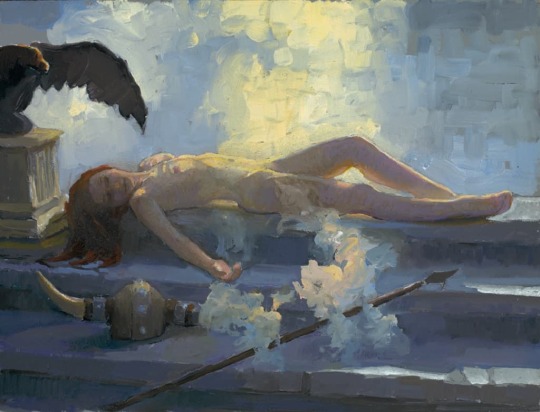
In his masterpiece, Wagner synthesised stories from across the Old Norse-Icelandic collection of poems known as the Poetic Edda. He had long been mulling over an opera based on the German epic, Das Nibelungenlied, but he realised that he needed more material and more inspiration. Wagner knew where he might find it: “I must study these Old Norse eddic poems of yours; they are far more profound than our medieval poems,” he remarked to the Danish composer Niels Gade in 1846. In 1851, when he got his hands on Karl Simrock’s edition of the Poetic Edda, Wagner finally saw how to develop his ideas about the death of Siegfried into a cycle and he also discovered the rhythms of traditional Germanic alliterative verse which he would use for his libretto.
The first poem of the Edda, “The Seeress’s Prophecy” selectively narrates the history of the universe, from Creation, when the world rises up out of the sea, to Ragna rök or Götterdämmerung, when the world ends in ice and fire. Wagner starts his opera about halfway through “The Seeress’s Prophecy”, where the Seeress allusively notes how moral corruption comes among the gods when they betray the giant who rebuilt the walls of Asgard for them. Interwoven in Das Rheingold with the gods’ bad faith is the tale of the Rheingold from the later heroic poems: the cursed treasure-hoard which brings strife in its wake, epitomised by the ring Andvari’s Jewel.
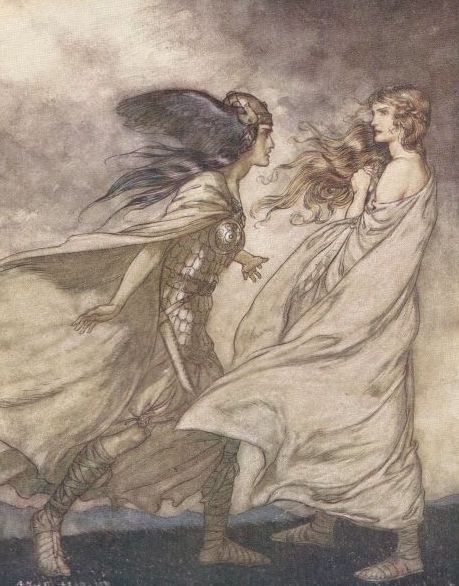
Wagner used a prose retelling of the heroic legends associated with Sigmund for Die Walküre, themes known to the poets of the Edda, but not recounted by them. Siegfried takes up the Edda once again with the troubled relationship of the young hero and Mime (Regin in Norse), the dragon fight, and the meeting with the valkyrie. In the Edda, Sigurd learns wisdom from the valkyrie: how to use runic magic for healing and protection, to ensure a calm sea, and to make fetters fall from the feet. The deliriously joyful union of hero and valkyrie is lost in a gap in the manuscript. When the story resumes, we are already deep into the betrayal and heartbreak caused by Sigurd’s forgetfulness — thanks to the magic potion given him at his in-law’s court — and the destruction of that sublime love through the hero’s innocence and Brynhild’s vengefulness.
Wagner follows German tradition for Siegfried’s death: stabbed in the back beside the Rhine, his one vulnerable spot revealed by Brünnhilde. The Poetic Edda gives fuller weight to the feelings of Sigurd’s wife. The two queens quarrel and Gudrun flaunts her knowledge of the truth: it was Sigurd who crossed the flame-wall to claim Brynhild for Gunnar. Wagner understood how the story of Siegfried and Brünnhilde must end, in immolation and the destruction of the compromised order of the gods. The world ends in fire as the waters rise and the Rhine overflows. When the ring returns to the Rhinemaidens, the circle is completed, ready — as the “Seeress’s Prophecy” suggests — for rebirth.
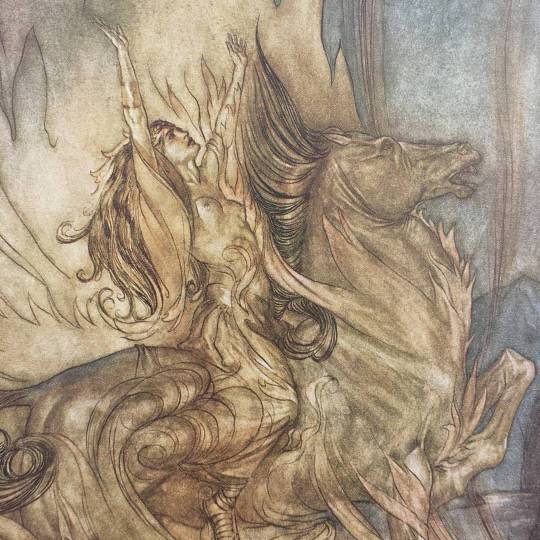
It’s more than 200 years since Wagner’s birth, and about 144 years since the Ring Cycle was performed for the first time in Bayreuth and shortly afterwards in London. More than any other artist before or since, Wagner saw to the heart of eddic themes, saw the inevitable compromises and double-dealing that divinity must make to accommodate desire and law. He saw how passion transfigures and destroys, how treasure and the torsions of power eat into the soul and bring tragedy to birth. He ended his cycle with Ragna rök and the deaths of his protagonists; he did not wish to follow Gudrun through the terrible cycles of marriage and vengeance that follow the loss of her first husband. The Poetic Edda manuscript ends with the last stand of Gudrun’s only remaining sons, sword in hands perched on the corpses of the slain like eagles on a bough. They die avenging Sigurd’s daughter Svanhildr, whose white-gold hair was, on her husband’s orders, trampled into the mud by wild horses.
#wagner#quote#edda#norsk#german#opera#culture#brunnhilde#gudrun#svanhildr#poem#norwegian#history#viking#arts#aesthetics#arthur rackham#ring cycle
69 notes
·
View notes
Text
Svanhildr: That might shut him up!
Me: I guess I have a new favorite super minor character!
1 note
·
View note
Text
There’s something I’ve been thinking about a lot lately in regards to Aslaug’s presence in Ragnar’s saga. A while back I found a thesis paper that talked about transgressive female characters in Icelandic literature and Aslaug was listed among them and it was... strange for me because I’ve never considered her to really be a transgressive character. The paper didn’t even really seem to endorse her as such either, finding her less fleshed out and sympathetic than say Gudrun and Brynhildr (two more obvious examples) in the Volsung saga.
And it just got me (and yes I know I’m grossly unqualified to answer such a question, this is really just me pointlessly musing) thinking about how the sagas potentially view Aslaug and in what way she could be seen as “transgressive.”
I mean, most of the analysis I’ve read of Aslaug doesn’t view her as “transgressive” in the sense of breaking societal rules. I mean she’s never narratively “punished” for her actions in the same way Hallgerd or Brynhildr are. Aslaug, as tragic a figure as she may seem at times... I think it’s kind of telling that the saga shows that she grows to old age and is seen as a figure commanding and deserving respect. Like, I love that quote “Where Aslaug is, there is the author’s heart.” I acknowledge that it’s kind of flowery but the basic premise: that Aslaug is the character is considered by the narrative to be the most worthy of sympathy and admiration seems accurate. And to me it’s not sympathy for a tragic anti-heroine who is intensely flawed and doomed, but rather because she embodies at someone conforms to society’s rules and by conforming manages to triumph even as she’s continually let down by the people around her. I think if I were to call her a “transgressive” character, it would be for the way the narrative focuses on her as the hero in contrast to Ragnar who is portrayed as comparatively ineffectual and less intelligent, rather than for her being transgressive.
IDK, what do you guys think, do you think of Aslaug as a transgressive character?
#text#aslaug#random worthless thoughts#I mean carolyn larrington's paper comparing aslaug and svanhildr seemed to say that aslaug embodies the proper woman#similarly from what Rowe's said of Aslaug it seems like the saga states that she embodies the more correct way of thinking and ruling#in comparison to ragnar#and... well yeah basically every piece I've read seems to say that she embodies the ideal within this heightened legendary world
15 notes
·
View notes
Text
— 𝐍𝐎𝐑𝐒𝐄 𝐌𝐘𝐓𝐇𝐎𝐋𝐎𝐆𝐘 𝐍𝐀𝐌𝐄𝐒 { 𝐅𝐄𝐌𝐈𝐍𝐈𝐍𝐄 𝐕𝐄𝐑𝐒. }
below is a list of NORSE MYTHOLOGY names that are more commonly seen as FEMININE. they are in alphabetical order for easier access. they are of various origins, so try and be mindful of this. please LIKE / REBLOG if you find this list useful!
Angrboða
Borghild / Borghildr
Brynhild / Brynhildr
Eir
Elli
Embla
Erna
Frea / Freya / Freyja
Frigg
Gerd / Gerðr
Grid / Gríðr
Grímhildr
Gróa
Guðrún
Gunnr
Heiðrún
Hel
Hildr
Huld / Hulda
Iðunn
Kára
Nanna
Sága
Sif / Siv
Signý
Sigrún
Skaði
Skuld
Svanhild / Svanhildr
Urd / Urðr
Vanadís
Verðandi
44 notes
·
View notes
Text
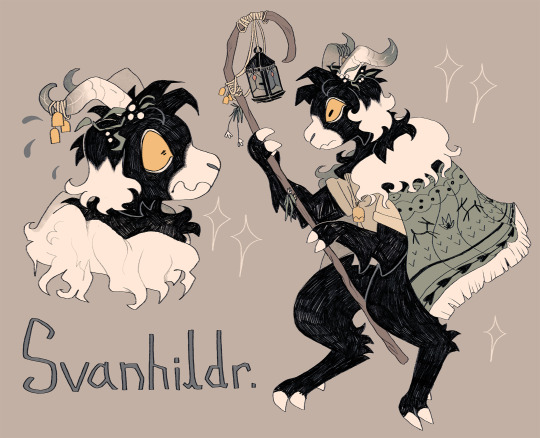
svanhildr my beloved returns
#my art#oc#svanhildr#anthro#furry#goat#illustration#oc tober#(this is day 3......i'm doing it at my own pace. lol)#I gave her some funky white eyeliner as a quick experiment and loved it so now she's got white eyeliner i guess#congrats svanhildr you've been REDESIGNED. in the smallest way possible. and also with more horn texture (that i didn't reference)#i need to reference things more i am stagnating so hard at the moment. whatever#last night me and the girlies made the age-old mistake of putting on mud face masks together and taking a cute polaroid for memories#anyway needless to say the polaroid came out darker expected and now we have a photo of us that could be very badly misinterpreted#and has very very VERY unfortunate connotations that we did not foresee in our shortsighted naivety and did NOT intend#live and learn and never let the photo escape into the outside world I guess!
2K notes
·
View notes
Photo


My Dovahkiin, Svanhildr, chillin’ on Karstaag’s throne.
5 notes
·
View notes
Photo

2019 - Fallen Valkyrie Svanhildr - Original Character Art
7 notes
·
View notes
Note
Drabble Ask - Invite Me, with Svanhildr and Alexir? (my bad, thank you for the mobile link!)
Leave a “Invite Me” in my ask, and I’ll write a drabble about one character asking another character to join them.
“Alexir!” Svanhildr called as she skipped across the Citadel’s central room to catch up to her friend, “I got permission to go out and pick some flowers for my room, make it a little more lively-”
Alexir let out a soft snort. Despite being underground, Svanhildr’s room managed to be plenty lively thanks to her love of colorful fabrics and the bright art that covered her walls.
But some flowers would suit it very nicely.
“Anyway,” Svanhildr rolled her eyes dramatically and bumped her shoulder against Alexir’s, “I was wondering if you’d like to come along. You could look for herbs or something.”
Alexir smiled down at her and nodded. “That sounds nice.”
drabbles: send me characters and a prompt
4 notes
·
View notes
Photo
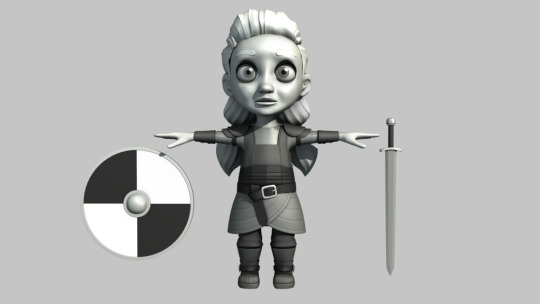




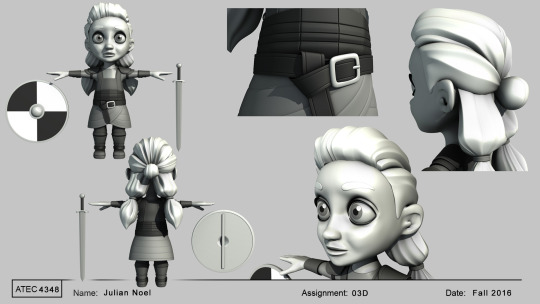


Character modeling project. We were tasked with creating a base character model and then created our own theme to make it more unique and interesting than just a generic humanoid figure. Having recently caught up with Vikings, I ended up choosing a young viking shieldmaiden.
#fall 2016#2016#modeling#render#viking#organic modeling#character#character model#shieldmaiden#Svanhildr#model sheet#ATEC 4348#modeling ii
0 notes
Text
odette’s personal staff is named svanhildr, and it has 12 mt. it can be further refined for either a wrathful or dazzling staff effect, though dazzling staff is one of her unit skills, so wrathful is the recommended refine to give it. carrying svanhildr gives odette spd/res +5, and drops the attack of enemy units within two spaces with physical weapons by 5 after combat.
she also comes with a personal skill in earthwind balm+, granting all units def/spd +6 when she heals.
her build would likely be
svanhildr ( wrathful )
recover+
earthwind balm+
def/res bond 3
dazzling staff 3
spur def/res 2
live to serve 3 ( seal )
green tome build coming........... soon.
3 notes
·
View notes
Photo

A huge thank you to Mikhael Brendan James Kates and Svanhildr Savannah Evans for teaching us Rising Sun. You did a wonderful job. 😊 I surprised myself by how much I enjoyed my crushing defeat at the hands of @nethershadow. #boardgames #thedicetower #gamergirl #todieforgames #games #tabletop #geekandsundry #geek #geekgirl #analoggaming #fun #new #gamer #gamergirl #blerdgirl #blerd @dicetowerconvention
#games#gamer#boardgames#new#thedicetower#blerdgirl#fun#analoggaming#blerd#geekgirl#tabletop#todieforgames#gamergirl#geek#geekandsundry
2 notes
·
View notes